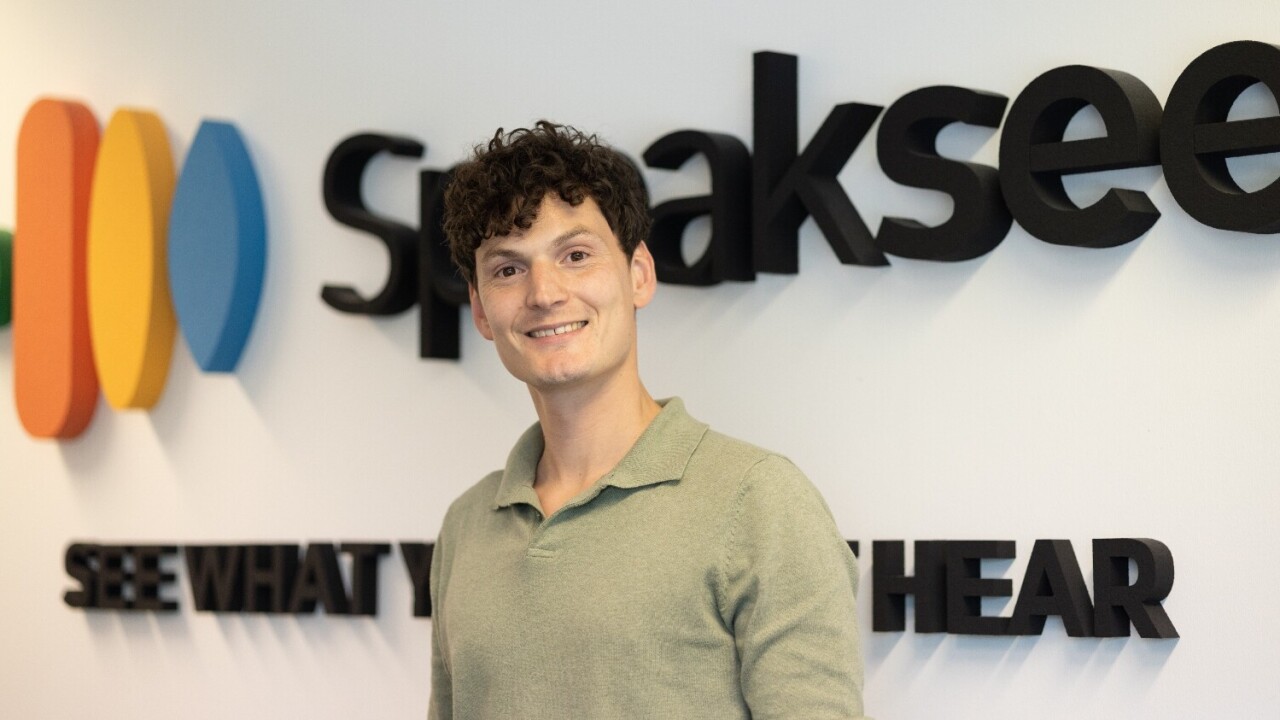
Growing up, Jari Hazelebach was a full-time interpreter. Both of his parents are deaf, and from a young age he helped them communicate in a world largely oblivious to the struggles of the 430 million people suffering from disabling hearing loss.
“While my parents could lip-read, their hearing disability made group conversations almost impossible,” Hazelebach told TNW. Even family Christmas gatherings were a struggle.
That’s what drove Hazelebach to found Speaksee: so people suffering from hearing loss could carry an interpreter in their pocket, everywhere they go.

The young entrepreneur’s initial goal was straightforward: he wanted to help his dad take part in work meetings. But all the speech-to-text software available was inadequate. Everything on the market was either too bulky, inaccurate, or impractical, says Hazelebach. His mum and dad agreed.
Eventually, the Erasmus University graduate came up with an AI-powered speech-to-text software and microphone kit that he believed could do the trick. In 2017, Hazelebach teamed up with systems engineer Marcel van der Ven and founded Speaksee to bring it to market.
How does Speaksee work?
Speaksee’s microphone kit is specifically designed to create live subtitles of group conversations for people suffering from hearing loss. During an interaction, the user hands out individual microphones to the members of the group, who clip the small devices to their collar.

Each microphone is equipped with beam-forming technology, which isolates the speech from background noise, improving accuracy. The audio is then sent to a charging dock. This station doesn’t just charge the microphones but also processes the audio and transmits to a smartphone app, where it appears as transcribed text.
All of this happens in real-time, allowing someone with hearing loss to read what’s being said. Each member of the group is colour-coded in the app, so the reader knows who’s saying what. The software also works with video conferencing.
The Speaksee app works in over 40 languages. The kit currently supports three microphones, but the company is working on expanding that to nine in order to support conversations with larger groups.
Scaling up
Today, Speaksee announced it has secured $1mn in fresh funding to scale up and tackle new markets. This brings its total raised so far to $4mn. The startup currently operates in the Netherlands but plans to branch out to the UK, Denmark, Switzerland, Norway, and Germany.
The hardest part about expansion, says Hazelebach, is securing government support. “Understandably, people don’t have to pay out of pocket for something like this,” he said. “They expect it to be subsidised.”
Recently, the Dutch Employee Insurance Agency (UWV) approved Speaksee for reimbursement. This means that the government will cover the costs of the microphone kit for any employee in the Netherlands. The UK has also fully approved all Speaksee products for government funding through the Access to Work and Disabled Students Allowance funds.
“Government support is a real game-changer,” said the founder. “It makes this life-changing technology within reach of so many more people.”
Speaksee is already used by several Dutch companies including KPN, Rabobank, and PwC. The Dutch government has also adopted the technology.
Back at home, Hazelebach’s parents use Speaksee everyday. His father says he wouldn’t be able to function at work anymore without it. Conversations around the table have changed for good.
“Christmas dinners have become demo day,” laughed Hazelebach. “Each year we test out new features and the whole family gives their feedback.
“This year they will try out the kit using nine microphones — I’m looking forward to that.”
Get the TNW newsletter
Get the most important tech news in your inbox each week.




